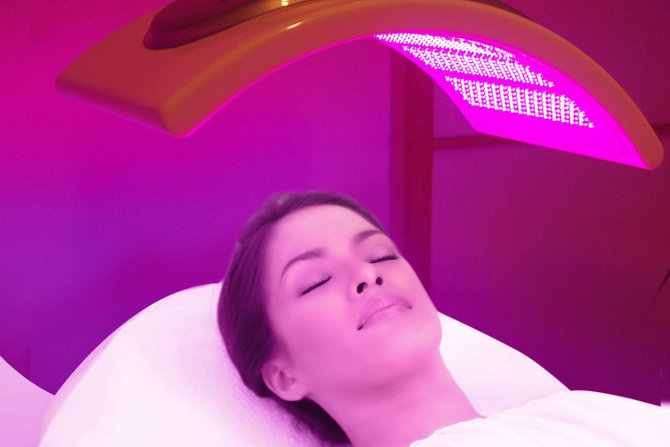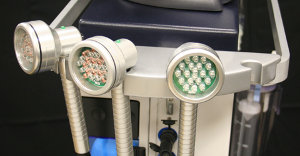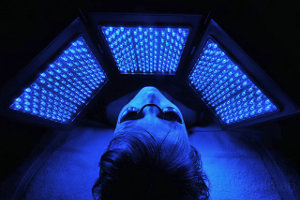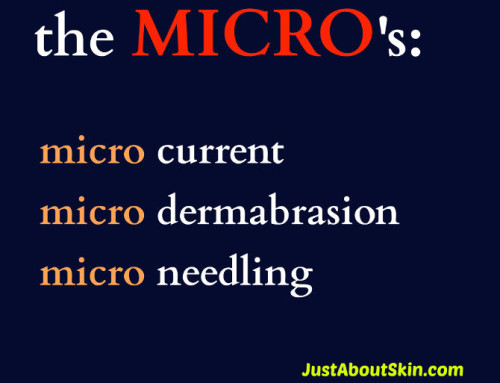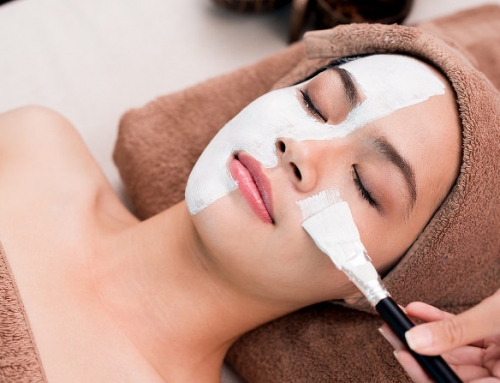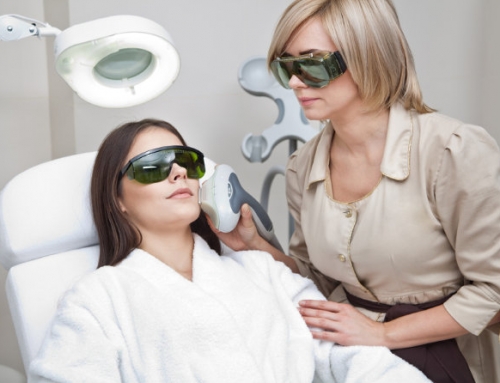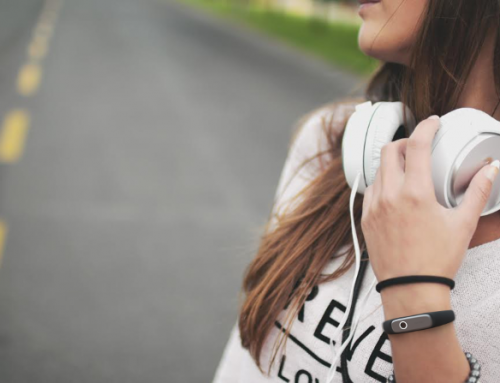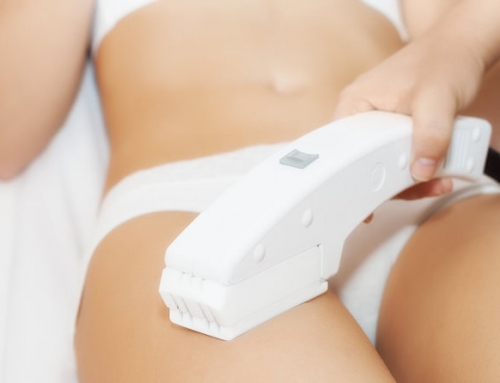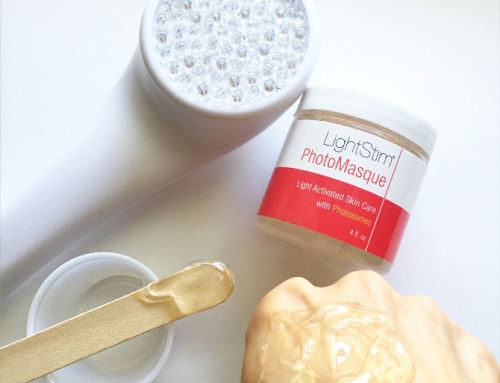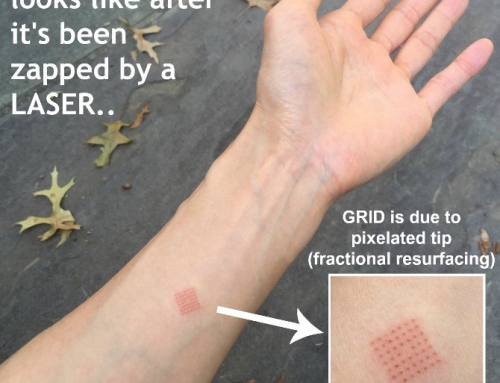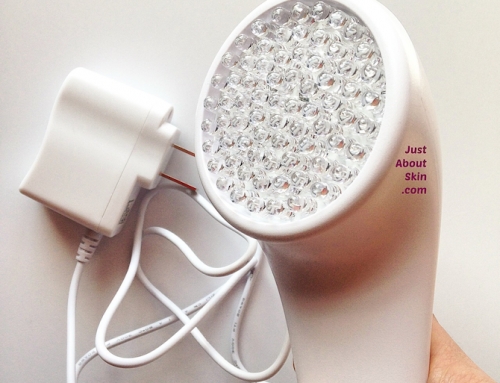Have you ever wondered if there are ways to improve your skin without having to apply products, take medications, or eat (not eat) certain foods? Well, there are!
It’s called light therapy. The concept is simple. Different colors of light are directed at skin. The light energies have beneficial effects on skin. This is not a faddish technology. It actually does work.
There are different kinds of light therapies – LED, IPL (Intense Pulsed Light), Infrared, and UV. Even the sun is a form of light therapy! It’s why we feel good in the sun 🙂
Today I want to talk about LED light therapy. It’s the most accessible one, and you can even purchase a device to use at home.
How Does It Work?
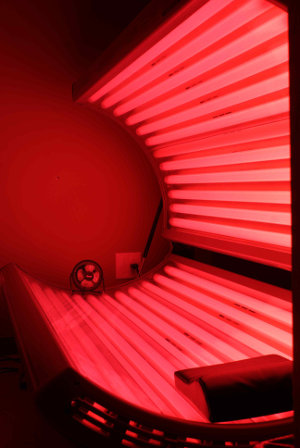 An LED light works by stimulating different responses in skin, such as boosting collagen production or reducing bacteria.
An LED light works by stimulating different responses in skin, such as boosting collagen production or reducing bacteria.
The benefits of LED on skin were first discovered by NASA scientists, who found that LED increased photosynthesis of plants in space and helped improve wound healing for astronauts. Since then, LED has been adopted for the treatment of many medical conditions and is very common in medical and esthetic settings.
Light energy affects skin at different depths of skin. It can penetrate just the top layer of skin (epidermis) or reach deep into the dermis.
How far it goes into skin depends on its wavelength. Different colors of light have different wavelengths of light. So for example, red light is a different wavelength from blue light. Red happens to have a longer wavelength than blue, so it goes farther into skin.
Once light energy is absorbed by skin, it is converted into thermal energy, which then stimulates various metabolic processes.
LED Colors
In skin care and medicine, the most popular LED colors are red and blue.
Red is good for treating aging skin, because it helps boost collagen production for fine lines, wrinkles, or sagging skin.
It’s also good for sensitive skin, inflamed skin, and injured skin, because it reduces inflammation and speeds up healing.
Blue is good for treating acne, because it kills the bacteria that causes acne. The blue light works by producing oxygen singlets, which attach to P. acnes bacteria. These singlets are phototoxic to the bacteria.
RED light (620-700 nm)
- Increases circulation & lymphatic flow
- Increases cellular energy production
- Increases collagen production and fibroblast activity
- Speeds healing
- Relieves pain
- Reduces inflammation
BLUE light (400-495 nm)
- Kills bacteria (has some of the anti-bacterial properties of UV light)
GREEN light (515-520 nm)
- Reduces hyperpigmentation (fades spots and discolorations)
YELLOW (AMBER) light (570-600 nm)
- Reduces redness
- Soothes sensitive skin
- Reduces the appearance of capillaries and spider veins
What Happens During A LED Treatment
During a LED treatment, you are typically exposed to the light source for 5-15 min. It can be longer. Even a few minutes is beneficial. With red light, a few minutes of exposure can visibly reduce skin redness and calm the skin.
The best part – you don’t feel a thing! It’s completely painless, safe, and non-intrusive. And you don’t have to do anything either – except lie down with your eyes closed and take a snooze. Now that’s a treatment for me!
Where You Can Get LED Light Therapy
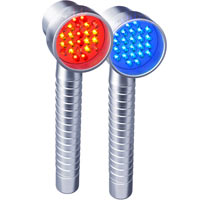 LED light therapy is used for cosmetic and medical reasons. For cosmetic treatments, you can find LED therapy offered most easily in a medical spa or dermatologist’s office. You can find them in some day spas, but it’s not the norm. If an LED treatment interests you, be sure to ask before you book your appointment.
LED light therapy is used for cosmetic and medical reasons. For cosmetic treatments, you can find LED therapy offered most easily in a medical spa or dermatologist’s office. You can find them in some day spas, but it’s not the norm. If an LED treatment interests you, be sure to ask before you book your appointment.
You can also buy LED devices made for consumers, but they are also expensive (unfortunately). Here are some examples –LightStim ($250), Baby Quasar Plus ($400), Baby Quasar MD Blue ($600), Baby Quasar MD Plus ($795), Nuface Trinity & Wrinkle Reducer ($450). There’s even a LED face mask (Illumask) offered at Ulta for around $25. But the amount of light power that it provides is limited, and so the benefit will be limited too.
See this post to understand what matters in a LED tool.
Hopefully the prices will drop A LOT over time. Because if aging, acne, or sensitivity are major concerns, these lights would make a great complement to a daily regimen!

